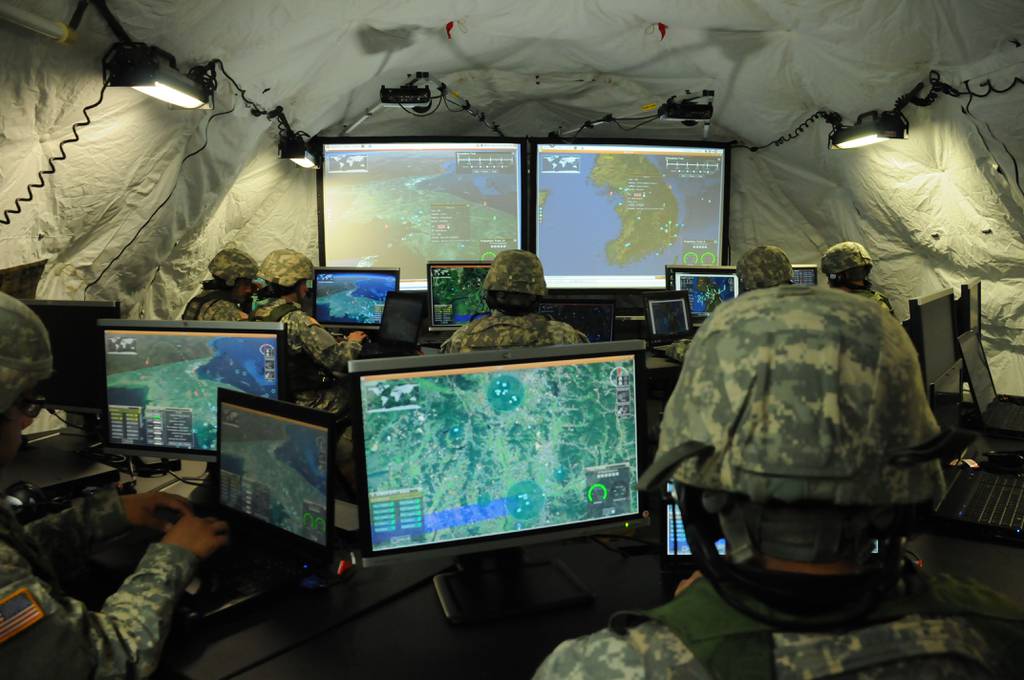WASHINGTON — The U.S. Army has approved the Integrated Battle Command System for full-rate production following years of delays as the service struggled with technical issues partly due to the expansion of the system’s mission well beyond simply serving as the brain for air and missile defense.
“The Army is proving it can and will succeed with its modernization plans as we continue to build momentum for the future,” Brig. Gen. Frank Lozano, program executive officer for missiles and space, said in an April 11 statement. “The sensor and effector integration this program brings to air and missile defense will ensure that our warfighters are best equipped to provide air defense against enemy threats.”
The Northrop Grumman-developed IBCS was originally created to serve as the command-and-control center for the Army’s future air and missile defense system. It was to tie together with a new 360-degree radar and potentially new launchers, replacing the aging Patriot weapon.
But the Army expanded the IBCS, deciding the system would also connect other sensors and shooters on the battlefield like the still-in-development Indirect Fire Protection Capability. The IFPC is designed to defend against rockets, artillery, mortars, cruise missiles and drones. It is also often described by service officials as the Army’s answer to Joint All-Domain Command-and-Control, an Pentagon-led effort to connect sensors and shooters across the entire U.S. military as one fighting force.
Northrop received a $1.4 billion contract for low-rate initial production of its future battle command system in December 2021. The Army has spent over $2.7 billion in development funding.
Software deficiencies prevented the Army from beginning its critical initial operational test of IBCS, but the system finally entered into the important evaluation in February 2022.
The delay in testing was a minor blip compared to the program’s previous struggles. IBCS experienced an almost four-year delay and struggled in a 2016 limited-user test. But following several soldier checkouts and other test events over the past few years as well as a successful limited-user test in the summer of 2020, the system made progress.
IBCS also demonstrated expanded capabilities at events like Project Convergence in fall 2021 at Yuma Proving Ground, Arizona.
The full-rate production decision comes as the U.S. ships the first two batteries’ worth of IBCS to Poland for the country’s Patriot systems it bought in 2018. Poland is set to become the first operational user of IBCS this summer.
Other European-based NATO allies are watching Poland and the evolution of the American program of record. And for its part, Northrop submitted IBCS in an Australian competition for a joint battle management system, while Japan and the U.K. are each seeking international options for an air defense battle command capability.
Poland may also buy additional systems for its Narew short-range air defense program and is working on a letter of offer and acceptance with the U.S. government before the end of the year.
The United States chose IBCS as the command-and-control capability for a new air and missile defense architecture in Guam, where it will connect to a variety of sensors and shooters. Northrop is working with the Missile Defense Agency to tie IBCS into other homeland defense capabilities.
Jen Judson is an award-winning journalist covering land warfare for Defense News. She has also worked for Politico and Inside Defense. She holds a Master of Science degree in journalism from Boston University and a Bachelor of Arts degree from Kenyon College.








